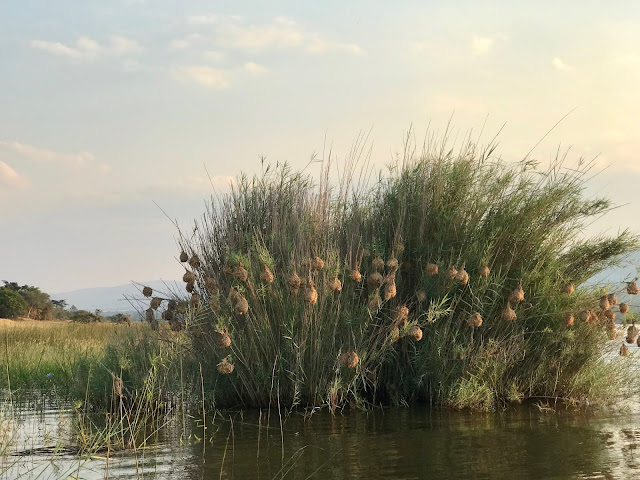My first safari in an inspiring national park
 |
| A giraffe and zebras in Akagera National Park |
I took a much-needed break from work last weekend when I went on a safari in Akagera National Park. It was really spectacular to see some of the eastern parts of Rwanda since I am based centrally in Kigali and usually head west for work. As a child, I used to rip pictures of wildlife from National Geographic magazines and post them on my bedroom walls. This trip gave me the chance to finally see some of those magnificent creatures in the wild. Additionally, I was able to learn more about Rwanda's history and its dedication to wildlife protection, all while riding around in the coolest vehicle I have ever seen.
After Rwanda's civil war in the 1990s, much of Akagera National Park was reallocated as farmland for returning refugees. The park size was diminished considerably and poaching went unchecked, decimating animal populations. However, after human security returned to the country, the government of Rwanda committed itself to ongoing conservation efforts that have since resulted in a remarkable turn around for the park. Currently, poaching is at an all-time low thanks to intensified law enforcement, K-9 anti-poaching dog units, and co-management of the park with African Parks (sidenote: check them out for all the phenomenal work they are doing for both animal and human security around African parks). Furthermore, a 120 km solar powered fence was installed to reduce human-wildlife conflict situations. Akagera National Park and the government of Rwanda are also committed to the park's surrounding communities. More than 1,300 Rwandan school children visit the park each year, staff hired from surrounding areas has tripled in recent years and 5% of total revenue generated by the three Rwandan national parks (Volcanoes, Akagera and Nyungwe) is shared with local communities. All in all, I was very impressed with the intentional, thoughtful management of this national park.
On the animal side, Akagera did not disappoint either. In May 2017 Akagera became a "big five" park after the successful reintroduction of lions and black rhinos. The fact that this park can sustain highly threated animals and big predators alike is just further proof of the thriving biodiversity that is being triumphantly protected on a daily basis. As we traveled through the park in our large safari vehicle, we rarely went for more than a few minutes without seeing some form of wildlife, with baboons and zebras being the most common. However after about 30 giraffe sightings, a herd of elephants, shores teeming with hippos and crocodiles as well as swarms of impalas and vervet monkeys, I was more than impressed with my first safari.
 |
| From the top of our safari vehicle |
More photos from Akagera National Park
 |
| Impalas in Akagera National Park |
 |
| Baboons and waterbucks near a watering hole filled with water lilies |
 |
| Elephant crossing |
 |
| Bird nests built into a plant as seen from a riverboat safari |
 |
| A hippo yawn as seen from a riverboat safari |
 |
| Vervet monkey |




Comments
Post a Comment